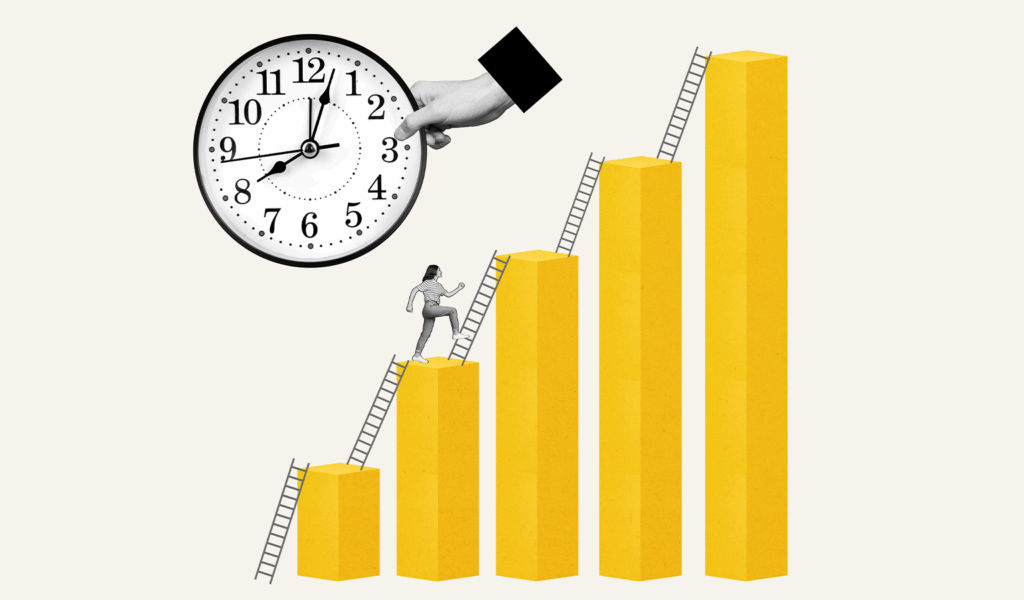sales
Understanding the Modern B2B Sales Cycle
The B2B sales process isn’t what it used to be a decade ago.
Today’s buyers are more informed, thanks to easy access to the information they need to make buying decisions.
Modern B2B buyers aren’t interested in pitches and “salesy” messaging. They want a value-added sales process with the insights to help them make data-backed buying decisions.
And they want it all on their terms.
If your organization doesn’t provide a smooth, frictionless buying experience, prospects will move to a company that does.
But in order to refine something, you must first understand it.
In this post, we’ll take a deep dive into the fundamental parts of a B2B sales cycle, and how you can optimize yours for a better user experience (and more sales).
We’ll start with a few basics first.
What is a Typical B2B Sales Cycle?
To understand a B2B sales cycle, you must first understand sales cycles.
Zendesk has a strong definition of a sales cycle. They call it the “repeatable and tactical process salespeople follow to turn a lead into a customer.”
Sales professionals also call this customer journey.
Therefore, a B2B sales cycle is simply a sales cycle where one business sells its products or services to another business.
B2B sales have unique attributes that set them apart from traditional B2C sales cycles.
These include, but aren’t limited to:
- Higher price points
- Multiple touch points over several channels
- Multiple buyers and sellers (sometimes whole departments)
These present certain challenges that make understanding B2B sales cycles all the more essential.

How is a B2B Sales Cycle Different from B2C?
Here are more key differences between B2B and B2C sales cycles:
Target Audience
While a B2B buyer can also double up a B2C buyer, motivations and behavior in both scenarios are poles apart.
For a B2B buyer, you’ll need shorter and punchier sales strategies with value propositions as your to-go-to methods. Discounts, social validations, and immediate benefits, on the other hand, resonate more with B2C buyers.
Sales Path
B2B buyers require more contact points to foster trust. Further, they need more nurturing than B2C buyers.
On the flip side, emotional attachments, financial considerations, and personal gratifications drive B2C purchases.
Content Type
A B2B sales cycle requires educational content. Buyers expect facts, data and statistics, and white papers to vet your products.
B2C customers, on the other hand, look for simple, relatable, and fun content to convert.
Sales Cycle Lengths
A B2B sales cycle is longer compared to a B2C cycle. B2B sales involve complex, multi-faceted, and steep sales processes. With B2B, you’ll sell to a TEAM, and you’re likely to meet various people, including managers, IT staff, executives, etc.
B2C cycles are typically shorter. A prospect can even buy from the first touch point.
Acquisition Costs
In a B2B sales cycle, you’re likely to spend more to acquire a customer. Often, the higher prices customers pay justifies the hefty spending acquisition.
B2C sales have lower customer acquisition cycles since most prospects can purchase to experiment with a new product, word-of-mouth referrals, etc.
Marketing Teams
B2B sales require working with a larger and more experienced sales team to drive conversion. B2B buyers take more time to access a product before purchasing, so a bigger team is necessary to build a stronger relationship with vendors at multiple touch points.
You don’t need a large sales team with B2C sales. Buyers can even buy directly from your website.
Who Does a B2B Cycle Include?
A B2B sales process involves the buying and the selling team.
The buying team includes decision-makers who give the final approval for the purchase. These would typically be senior managers and heads of business units who oversee the users of the product or service you’re selling.
The selling team included B2B sales reps who implement strategic and specialized selling techniques to engage B2B buyers.
Because B2B buyers research products and services before buying, this team may include relationship managers, subject matter experts, and solution consultants.
Here are two other relevant players in most B2B cycles:
- The gatekeeper — it’s the gatekeeper’s job to protect the stakeholders’ time. One of the biggest challenges in the beginning of the sales cycle is winning over the gatekeeper.
- The internal advocate — internal advocates are some of the most powerful assets you can have when selling in a B2B context. These folks usually don’t have decision-making power, but are passionate about the solution and have the leverage to make an internal pitch to the decision-makers.
What Does a B2B Sales Cycle Look Like?
B2B sales cycles aren’t the same across the board. The process varies significantly depending on the industry, vertical, regulations, and procurement processes.
For example, a B2B SaaS sales cycle for a business offering digital and software services to companies wouldn’t be the same for organizations that distribute raw materials to manufacturers.
Understanding the typical sales cycle in your target markets will help you personalize the process to a specific prospect.
B2B Cycle Lengths
Just like the sales process, the B2B sales cycle length varies greatly depending on several factors.
According to CSO insights, the most common sales cycle length is four to six months for new customers. Some industries even have sales cycles that go beyond 12 months.
However, returning customers have a significantly shorter sales cycle, with the vast majority of repeat business only taking one to three months to close.
Knowing the benchmarks of your specific industry and product type can help you see if you’re on the right track or way off the mark.
Significantly longer sales cycles are often a sign that your sales process is too convoluted, inefficient, or human-centric (as opposed to automated).
Shortening your sales cycle will not only impact revenue in the short term, but also improve all top-line metrics across the board (CAC, LTV, and more).
How to Shorten a B2B Sales Cycle
Sales leaders should always be striving to shorten the sales cycle. That means studying and optimizing every aspect of the customer journey — from the moment your reps make contact with a prospect to the moment the ink dries on the contract.
In addition, understanding short and long sales cycles can enable organizations to compare several variables and help them calculate their average B2B sales cycle.
A business may find that, for instance, some prospects may commit within six months, others within nine months, and a majority within one year.
Below are some strategies to shorten a sales cycle:
- Clearly defining your customer
- Aligning your sales and marketing teams
- Mapping your content within your marketing funnel
- Better qualifying your leads
- Using AI-powered sales enablement software to automate marketing decisions
How the B2B Sales Cycle Has Evolved
The internet has changed how people buy. Sellers are no longer the arbiters of information.
Buyers, both in B2C and B2B contexts, can come into your sales cycle having fully researched every aspect of your product, your competition, and your pricing.
While B2B sales often still depend on relationship building, sales reps no longer rely on cold calls and emails to initiate and nurture a sales cycle to fruition.
Now, digital-based B2B cycles are more targeted and insights-driven.
Today, sales reps don’t have to meet potential buyers to engage and foster relationships because the prospect can access the information they need to make buying decisions with a few clicks.
But the technological revolution goes both ways, helping sellers as well.
Sales reps can leverage intelligence tools to learn more about prospects, including their interests, buying readiness.
Tools like Accent Technologies can even use machine learning to recommend key pieces of content at critical points in the sales cycle — content that has succeeded in winning over similar prospects in the past.
So while technology has empowered buyers to be educated, it’s also empowered sellers to be more prepared and data-driven.
Typical Stages of a B2B Sales Cycle
There are often seven B2B sales cycle stages, as outlined below:
Lead Generation
This is the first step of a B2B sales cycle. It involves looking for potential customers, otherwise known as prospecting.
Each company must define what a lead means to them. Some organizations regard a lead as simply anyone who drops a business card in a fishbowl at a trade show.
Other businesses define a lead as someone who’s openly shown interest in a product a service, either by filling out a contact form or engaging with content on their website.
The best companies do both outbound and inbound lead generation. Outbound lead generation involves actively reaching out to prospects through tradeshows, targeted ads, or outreach emails.
Inbound lead generation involves using content marketing, SEO, email marketing and social media marketing to “draw people in” to the sales cycle.
Qualification
Not every lead is a good fit for your business. Spending ample time in the qualification phase will save you and your sales reps tons of time and headaches.
Qualification is a bit like a second date. We’ve met. Maybe we’ve hit it off. But are we really a good fit for each other?
Good lead qualification involves a lot of question-asking on the part of the seller. Questions such as:
- What problems are you experiencing in (area your business helps with)?
- Thus far, how have you attempted to solve the problem?
- What would you like to implement or change now to achieve these goals?
Qualifying potential customers enables you to assess the prospect’s suitability as your client (and you as their vendor).
You may find the client’s problem is something far outside the scope of what your solution can solve. At this point, it’s better to cut the line and point the prospect in another direction as opposed to wasting everyone’s time.
Pitch
The fourth B2B sales stage involves presenting your prospect with a pitch as per their needs identified in earlier stages.
A sales pitch lets the prospect know that you’ve identified their problem and would like to be a part of the solution.
Oftentimes, a pitch involves a live demo or more in-depth walkthrough of the product or service you offer. It can also take the form of a custom proposal document for service-based companies.
As a general rule, it’s a good idea to make a custom pitch for each and every prospect, utilizing the answers to your qualification questions as the basis of your presentation.
Objection Handling
“Let me run this past my IT guys and get back with you.”
“Can you email me this info to show to my boss?”
“Can we schedule another demo with the marketing department?”
These are just a few of the phrases you’ll hear after the initial pitch phase. B2B sales often involve far more parties than B2C sales, and likewise move a lot slower.
The more people you involve in the process, the more likely you’ll encounter objections. In fact, you should be a bit concerned if you don’t encounter objections.
Common objections include:
- Price
- Reluctance to change
- Lack of interest
- Skepticism about the efficacy of the product
- The pain points don’t warrant the operational shift
If you want to learn more about effective objection-handling, check out our ultimate guide on the topic here.
Closing
At this point, you’re edging closer to sealing the deal.
You have presented your pitch, dealt with objections decisively, and your prospect has agreed to take your offer.
Closing involves ironing out the finer details like concluding the sales, signing the contract, and payment terms.
You’ll also want to discuss any pending issues to avoid future surprises or disagreements.
Check-in
Once you’ve sealed the deal and the prospect is now a client, you’ll want to check-in to see if the customer is deriving value from using your solution.
Check-ins, like follow-ups, can be great for generating positive reviews from your customers. And, reviews can come in handy when searching for new B2B leads.
You’ll also be handing off the customer to your customer success team (if you’ve got one) to ensure adoption and retention (and prevent churn).
How to Optimize the Sales Cycle
While the exact stages and steps to a successful B2B sales cycle are unique from business to business, there are three things you can do to optimize the process and boost growth irrespective of your industry. These are:
Adopting Digital-first Touches
To meet the demands of the modern sales cycle, B2B sellers must adopt a digital-first mindset.
According to the Gartner Future of Sales 2025 report, 80 percent of B2B interactions between sellers and buyers will happen in digital channels.
According to Gartner,
“Sales organizations must be able to sell to customers everywhere the customer expects to engage, interact and transact with suppliers.”
B2B sales representatives must leverage new tools and channels as well as new strategies to engage potential customers. This way, reps can match their sales activities to their prospect’s buying practices.
A hybrid approach can also work. If need be, sales reps can meet prospects in-person to continue the conversation and buying process.
Personalizing Experiences
Personalizing a B2B sales process involves tailoring your offers and communication to your prospect’s needs.
Just because you’re selling a B2B product or service to a company doesn’t mean there isn’t a real person on the other end who’ll react positively or negatively to your cues.
B2B personalization is crucial for winning business. In fact, 52 percent of B2B customers expect an in-depth understanding of their needs, reflected via tailored experiences.
Some B2B experience personalization strategies include:
- Segmenting your audience and creating targeted content for each group
- Sending personalized messages to prospects
- Using customized sales demos or pitch decks
Anticipating Your Buyer’s Needs
You can anticipate your prospect’s needs by being proactive with your customer service. Understanding your sales cycle and how potential customers’ motivation to buy what they’re trying to achieve goes a long way in helping you land that sale.
So, whenever you sense a customer might have a problem your solution can resolve, reach out to them proactively instead of waiting for them to contact your support desk.
This way, the potential customer feels assured they’re replacing their money with a solution that can provide the benefits they want.
The Bottom Line
The B2B sales cycle is often more complex than B2C contexts, with many moving parts.
Businesses that understand their sales cycles can optimize them using automation, AI-powered selling tools, and more efficient digital-first practices.
Shortening the sales cycle improves every key metric in your business — customer acquisition cost, lifetime value, and bottom-line revenue.
Next Steps
Accent Technologies is the first and only SaaS company to bring together SALES AI and CONTENT MANAGEMENT in a true REVENUE ENABLEMENT PLATFORM. We provide both sales and marketing with better visibility into the performance of their teams.
This drives revenue through intelligent recommendations for complex sales scenarios and provides the data for rich analytics that power better coaching, forecasting, and long-term customer support. Learn more about our solutions or request A LIVE DEMO to see it in action.











